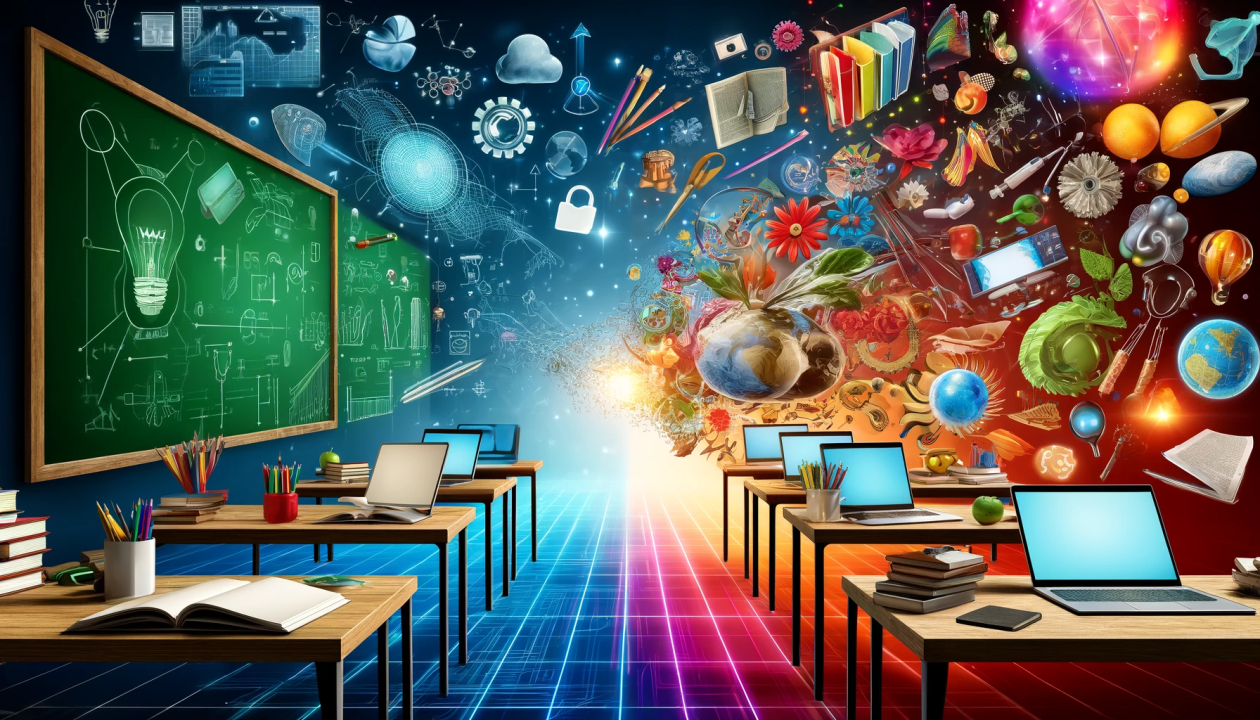The landscape of education is rapidly evolving, thanks to advancements in technology. From digital tools to online platforms, technology is transforming how students learn, how teachers teach, and how educational institutions operate. In this article, we’ll explore how digital tools are changing learning, enhancing student engagement, and creating new opportunities for educational excellence.
The Rise of E-Learning and Online Education
One of the most significant transformations in education is the rise of e-learning and online education platforms. With the advent of the internet, students can access courses and materials anytime, anywhere, allowing for a more flexible and personalized learning experience. Massive Open Online Courses (MOOCs), platforms like Coursera, edX, and Udemy, and virtual classrooms have opened up education to a global audience, making learning more accessible than ever before.
Digital Classrooms and Interactive Learning
Digital classrooms have replaced traditional chalkboards and textbooks, using tools like smartboards, interactive apps, and cloud-based resources to make lessons more engaging and interactive. With these tools, students can access multimedia content, participate in live discussions, and complete assignments in real-time. This shift towards interactive learning not only enhances student engagement but also encourages active participation and collaboration.
The Role of Educational Apps

Educational apps are a key driver of change in the classroom. From apps for math and science to language learning tools, these apps provide personalized learning experiences that cater to students’ individual needs and learning styles. Many apps also include gamification elements, turning learning into an interactive and enjoyable experience. Apps like Duolingo, Khan Academy, and Quizlet are helping students develop their skills at their own pace, enhancing knowledge retention and boosting academic performance.
Artificial Intelligence in Education
Artificial Intelligence (AI) is making its mark in education, offering new opportunities to enhance learning experiences. AI-driven tools can assess student performance, provide personalized recommendations, and automate administrative tasks, freeing up time for educators to focus on teaching. AI tutoring systems can adapt to students’ learning speeds and preferences, offering targeted support where needed. Additionally, AI-powered analytics help schools and educators identify areas where students might be struggling, enabling timely interventions to improve academic outcomes.
Virtual Reality (VR) and Augmented Reality (AR) in Education
Virtual Reality (VR) and Augmented Reality (AR) are revolutionizing how students experience learning. These technologies enable students to immerse themselves in simulations and interactive 3D environments, making learning more engaging and experiential. For instance, VR simulations allow students to explore historical events, scientific phenomena, or complex mathematical concepts in a virtual space, while AR apps overlay digital information onto the real world to enhance understanding. These immersive technologies provide students with hands-on learning experiences that would be difficult or impossible to replicate in traditional classrooms.
Cloud-Based Learning and Collaboration
Cloud-based tools have become essential for both students and teachers. Platforms like Google Classroom, Microsoft Teams, and Slack allow students to collaborate on projects, share documents, and communicate with peers and instructors in real-time, regardless of location. Cloud storage also ensures that materials are easily accessible and can be updated instantly, ensuring that students always have access to the latest content.
The Impact of Digital Tools on Special Education
Digital tools have also made significant strides in special education. Assistive technology such as speech-to-text software, screen readers, and adaptive devices helps students with disabilities access learning materials and participate in class activities. These tools support diverse learning needs, enabling all students to reach their full potential in an inclusive educational environment.
Gamification in Education
Gamification is another way technology is changing how students engage with learning. By integrating game-like elements, such as points, badges, and leaderboards, into educational content, teachers can increase student motivation and foster a sense of achievement. Platforms like Classcraft and Kahoot! allow educators to turn lessons into fun, competitive challenges, encouraging students to stay engaged and learn while having fun.
Online Assessments and Grading
Digital tools are also transforming the assessment process. Online quizzes, tests, and assignments are streamlining how educators evaluate student performance. Tools like Google Forms, Turnitin, and Socrative enable instant feedback and more efficient grading, allowing teachers to track progress and adjust their teaching methods based on student performance.
Read More : http://Exploring the Internet of Things (IoT) and Its Impact on Technology
The Future of Technology in Education
As technology continues to advance, the future of education looks even more promising. 5G networks will enable faster data transfer and better connectivity for remote learners, while blockchain technology could revolutionize credentialing and certifications. Innovations like AI-powered learning platforms, smart content, and adaptive learning technologies will further personalize education, making it even more accessible, inclusive, and effective for all students.

